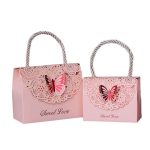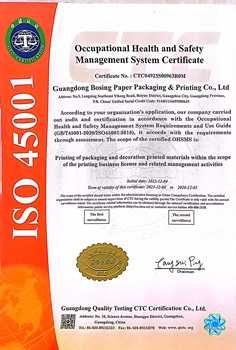In the world of wine, first impressions matter more than we often realize. While connoisseurs rightly focus on terroir, vintage, and tasting notes, there’s an unsung hero in the wine experience that’s undergoing a quiet revolution: the wine packaging box. No longer just a practical container for transportation, today’s wine boxes have become sophisticated marketing tools, environmental statements, and even enhancements to the drinking experience itself.
The evolution of wine packaging has been remarkable. For centuries, wine was primarily about what’s inside the bottle – the carefully crafted liquid that results from years of viticulture and winemaking artistry. The packaging was functional at best, often consisting of simple cardboard boxes that served merely to protect the bottle during transit. But as the wine market has become increasingly competitive and consumers more discerning, wineries have discovered that the unboxing experience can be just as important as the wine itself.
Modern wine packaging boxes are designed to tell a story before the cork is even popped. High-quality materials, innovative structural designs, and thoughtful details transform the simple act of opening a wine box into a sensory journey. Embossed logos, magnetic closures, ribbon pulls, and custom inserts that cradle the bottle like a precious artifact – these elements work together to create anticipation and communicate the wine’s quality and character. A sturdy, well-designed box suggests that what’s inside is worth protecting, worth savoring, worth the price tag.
Beyond aesthetics, functionality has seen incredible innovations. Temperature-controlled packaging now allows wines to be shipped across continents without compromising quality. Boxes with integrated handles make transportation effortless, while those with resealable features protect opened bottles from oxidation. Some premium packaging even includes built-in aerators or incorporates materials that maintain ideal humidity levels. The humble wine box has evolved from passive protector to active participant in preserving the wine’s integrity.
Sustainability represents another frontier in wine packaging innovation. As environmental concerns grow, wineries are increasingly turning to eco-friendly packaging solutions. Recycled materials, biodegradable inserts, and minimalist designs that reduce waste are becoming standard among forward-thinking producers. Some companies have developed plant-based packaging that can be composted, while others create boxes that can be repurposed as storage or decorative items, extending their lifecycle beyond the initial use. This environmental consciousness not only appeals to eco-aware consumers but also aligns with the agricultural roots of winemaking.
The psychological impact of premium packaging shouldn’t be underestimated. Studies in consumer behavior consistently show that attractive, substantial packaging enhances the perceived value and quality of the product inside. A wine presented in an elegant, well-crafted box creates a halo effect that can actually improve the tasting experience. The careful unboxing ritual builds anticipation, focuses attention, and prepares the drinker for something special. In a world where experiences are increasingly valued over possessions, the packaging becomes part of the luxury experience.
For wineries, investing in quality packaging has tangible business benefits. Distinctive boxes improve brand recognition and recall in a crowded marketplace. They provide additional surface area for storytelling – through clever copy, beautiful imagery, or technical information about the wine. Well-designed packaging also reduces breakage during shipping, protecting both the product and profit margins. Perhaps most importantly, memorable packaging encourages social sharing in the age of Instagram and unboxing videos, providing valuable organic marketing.
Looking ahead, technology is set to transform wine packaging even further. QR codes that link to vineyard videos, augmented reality experiences triggered by smartphone cameras, NFC chips that verify authenticity – these digital integrations are beginning to appear on wine boxes, bridging the physical and digital worlds. Smart packaging that monitors temperature or indicates optimal drinking windows may not be far off. The wine box of the future will likely be both beautiful and intelligent, enhancing the connection between producer and consumer.
Despite these innovations, the fundamental purpose remains unchanged: to protect and present the wine at its best. The most successful packaging balances form and function, creating an experience that begins the moment the box is received and continues through the final sip. It respects the wine’s tradition while embracing contemporary design and technology. In an increasingly digital world, the tactile pleasure of holding a beautifully packaged bottle, of carefully removing it from its custom-fitted cradle, provides a tangible connection that screens cannot replicate.
As we reconsider every aspect of the wine experience, from vineyard practices to glassware, packaging deserves its place in the conversation. The right box does more than transport – it communicates quality, builds anticipation, enhances preservation, and tells the story of the wine within. In the competitive world of wine, where countless options vie for attention, the packaging box has emerged from its utilitarian origins to become an essential element of the brand experience. The next time you receive a beautifully packaged wine, take a moment to appreciate the box before opening the bottle – you’re holding not just a container, but the opening chapter of your wine experience.




Leave a Message